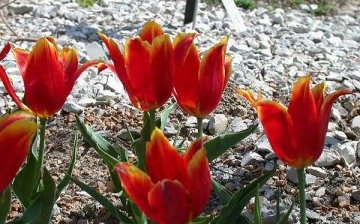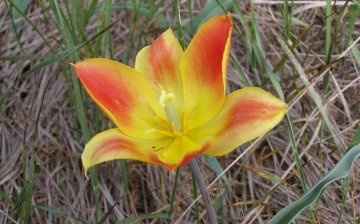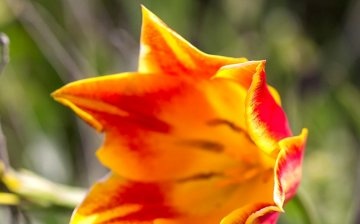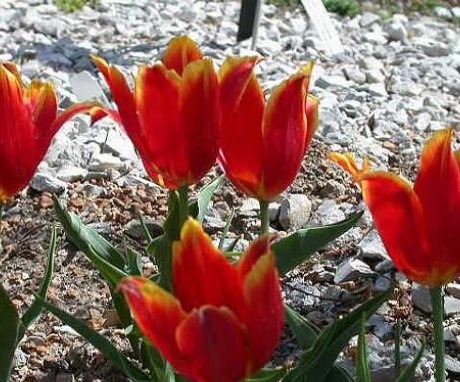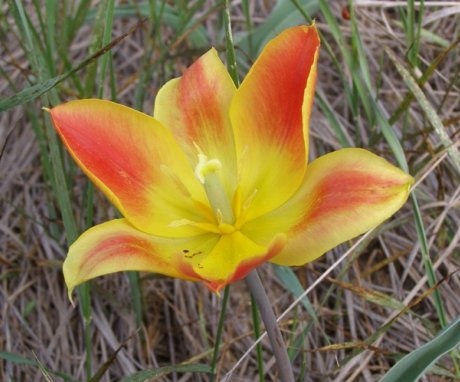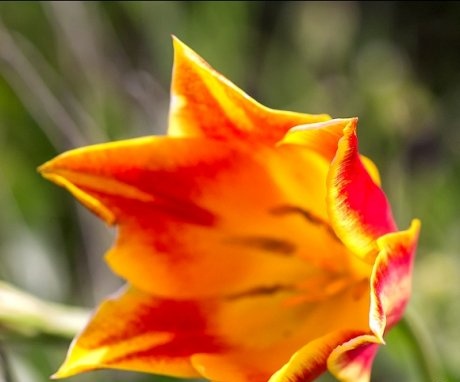Schrenck tulip: features and cultivation possibilities
The Schrenck tulip is a wild-growing species of tulips with a wide habitat. It is widespread in the Volga region, in the South Urals, in the Caucasus, in the Crimea, it is also found in Western Siberia. This is one of the most beautiful plants of the steppe and semi-desert zone: at the time of flowering, the space of the steppe is covered with a magnificent floral carpet consisting of tulips of several shades. They can be yellow, red, pale pink, white tulips are also found.
Content:
- The appearance of the flower and its features
- Growth cycle of shrenk tulip and flowering conditions
- Shrenk's tulip guard
The appearance of the flower and its features
This plant is considered one of the oldest types of tulips: it is believed that this particular species became the ancestor most cultivars.
It got its name from the name of the botanist Schrenk, who was studying this species. However, today the Schrenck tulip is under threat: it is listed in the Red Book, and it is strictly forbidden to collect flowers for bouquets and dig up bulbs. Conservation measures are only helping to partially restore the population in many regions.
Outwardly, the Schrenck tulip is distinguished by its modest natural beauty:
- This is a small plant, its height is 15-40 cm, it is located on a leafless stem large cup-shaped bud with bright petals.
- At the base of the stem are several dark green leaves, slightly curled around the stem, they have a lanceolate or oblong shape.
- The perianth consists of 6 small, rounded leaves.
- One of the features of the shrenk tulip is the variety of bud color even in one population: the color can be lilac, purple, and variegated flowers with mixed shades are also often found.
- Such species variability makes it one of the most interesting for breeding work: it concerns not only the color of flowers, but also the growth of the tulip, as well as the time of its flowering.
- Tulip fruit - box, the main flowering begins in May and lasts 12-14 days.
- A water capsule can ripen 240 seeds, this contributes to the rapid spread of the plant over large areas.
Growth cycle of shrenk tulip and flowering conditions
Schrenck's tulip refers to bulbous plants family of liliaceae, the main way of reproduction is seed. Most often it can be found in the fescue-wormwood steppe with grasses.
It is a perennial plant that goes through a long formation cycle after germination:
- During the first year, a bulb will form, which ultimately sinks into the soil by 3 cm, and the aerial part is a single cotyledonous leaf, which will be replaced by normal leaves only from the second year.
- Starting from the second year of life, there is a gradual deepening of the bulb and the germination of the petiole leaf. Biologists have calculated that on average, it takes up to 6 years from germination to the first flowering, this period depends on soil moisture.
- When the plant reaches the age of reproduction, it has three true leaves, after which the peduncle grows. In dry years, only a small part of the population will bloom, and if the moisture situation is favorable, the steppe will be covered with a real flower carpet.After two weeks of flowering, a seed box begins to form, fruiting takes about 32 days. The ripe box cracks, the seeds spill out.
- After the end of the growing season, the mother bulb is depleted and gradually dies off, and a replacement bulb grows in its place, which completely completes its formation during the dormant period.
The Schrenck tulip prefers regions with cold winters and hot summers, only in these conditions will it be able to grow and start flowering in time.
Typically, it grows in soils with a high salt content: when trying to grow bulbs on softer soil in gardens, biologists have found that the plant begins to lose its characteristic appearance and becomes more like common garden tulip.
Shrenk's tulip guard
Unfortunately, the most beautiful plant the steppe today is endangered. There are several reasons for this: constant plowing of virgin lands, uncontrolled and overly intensive cattle grazing, soil pollution with industrial emissions.
However, the most destructive factor is precisely the human one: during the flowering period, people thoughtlessly tear plants, destroying the most beautiful and largest flowers.
Because of this, natural selection slows down, and the growth area continues to shrink from year to year. Environmental services are trying to prevent unnecessary death of plants: harvesting is strictly prohibited, environmental patrols are posted in places of abundant flowering.
In addition, constant explanatory work is being carried out, urging people to be more careful with nature. However, all measures are not effective enough, and the population continues to decline.
More information can be found in the video.




